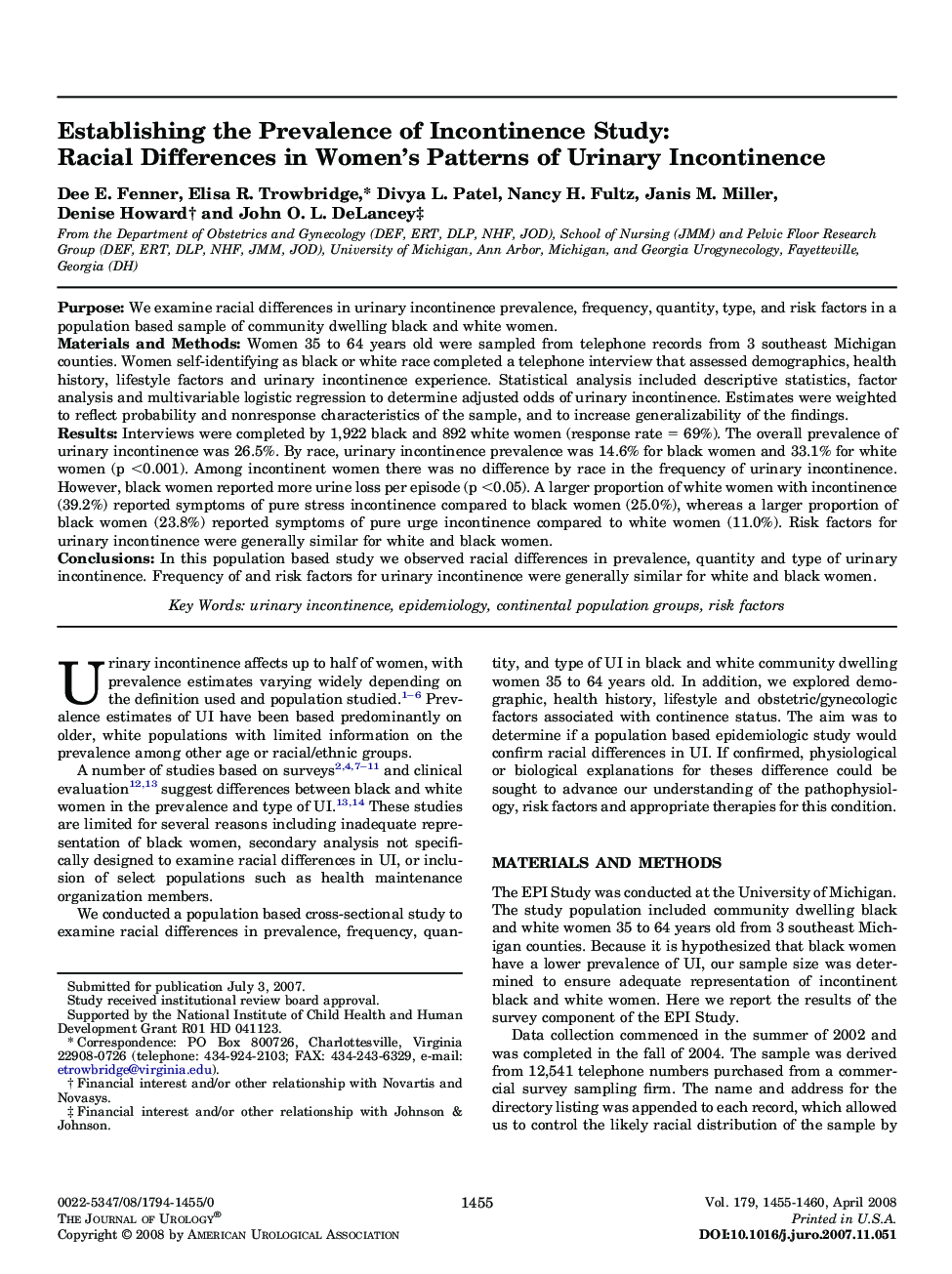| Article ID | Journal | Published Year | Pages | File Type |
|---|---|---|---|---|
| 3878276 | The Journal of Urology | 2008 | 6 Pages |
PurposeWe examine racial differences in urinary incontinence prevalence, frequency, quantity, type, and risk factors in a population based sample of community dwelling black and white women.Materials and MethodsWomen 35 to 64 years old were sampled from telephone records from 3 southeast Michigan counties. Women self-identifying as black or white race completed a telephone interview that assessed demographics, health history, lifestyle factors and urinary incontinence experience. Statistical analysis included descriptive statistics, factor analysis and multivariable logistic regression to determine adjusted odds of urinary incontinence. Estimates were weighted to reflect probability and nonresponse characteristics of the sample, and to increase generalizability of the findings.ResultsInterviews were completed by 1,922 black and 892 white women (response rate = 69%). The overall prevalence of urinary incontinence was 26.5%. By race, urinary incontinence prevalence was 14.6% for black women and 33.1% for white women (p <0.001). Among incontinent women there was no difference by race in the frequency of urinary incontinence. However, black women reported more urine loss per episode (p <0.05). A larger proportion of white women with incontinence (39.2%) reported symptoms of pure stress incontinence compared to black women (25.0%), whereas a larger proportion of black women (23.8%) reported symptoms of pure urge incontinence compared to white women (11.0%). Risk factors for urinary incontinence were generally similar for white and black women.ConclusionsIn this population based study we observed racial differences in prevalence, quantity and type of urinary incontinence. Frequency of and risk factors for urinary incontinence were generally similar for white and black women.
